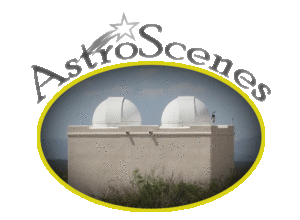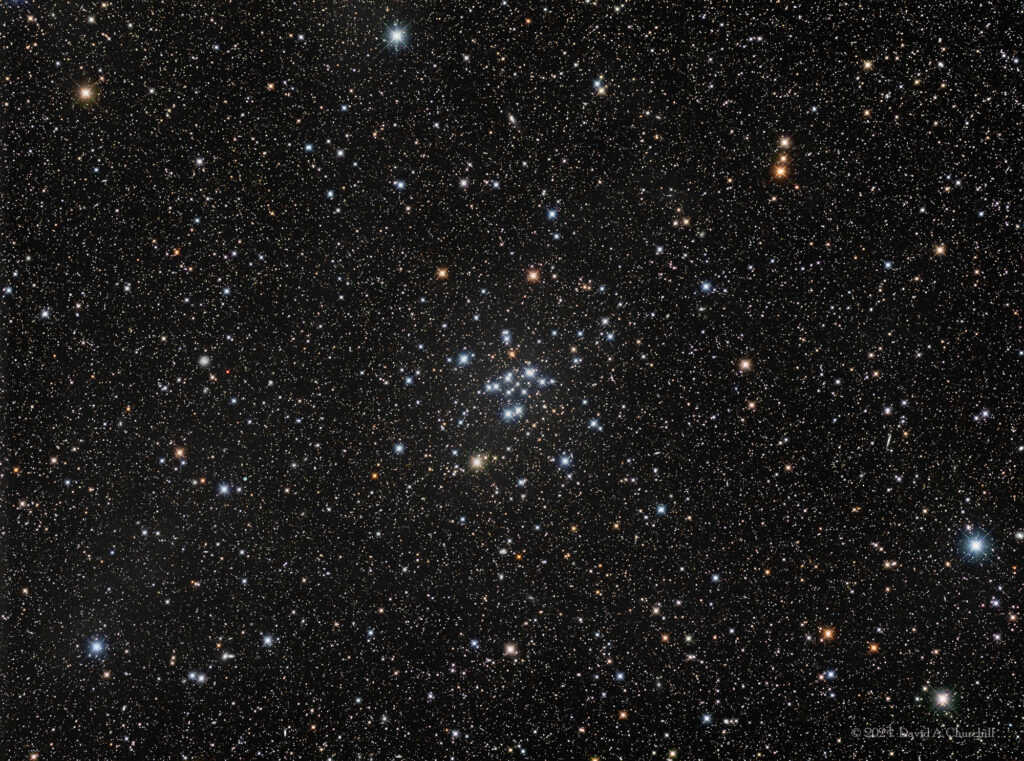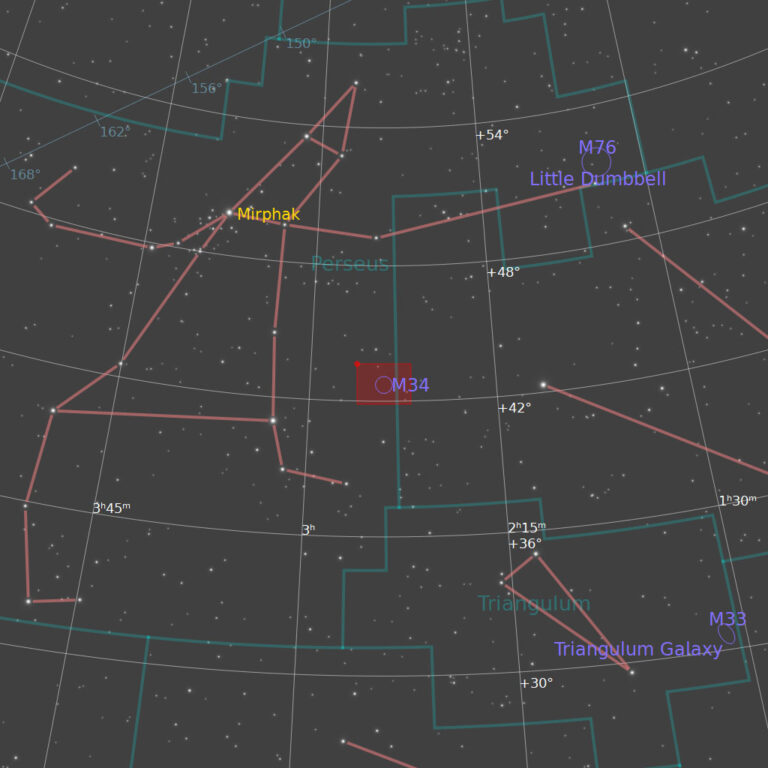Messier 34
Spiral Cluster. Open Cluster, Perseus
December 2024. Cave Creek Canyon Observatory, Arizona Sky Village
- Description
- Technical
- Links
Messier 34 (also known as M34, NGC 1039, or the Spiral Cluster) is a large and relatively near open cluster in Perseus. It was probably discovered by Giovanni Batista Hodierna before 1654 and included by Charles Messier in his catalog of comet-like objects in 1764. Messier described it as, “A cluster of small stars a little below the parallel of γ (Andromedae). In an ordinary telescope of 3 feet one can distinguish the stars.”
Based on the distance modulus of 8.38, it is about 470 parsecs (1,500 ly) away. For stars ranging from 0.12 to 1 solar mass (M☉), the cluster has about 400. It spans about 35′ on the sky which translates to a true radius of 7.5 light years at such distance. The cluster is just visible to the naked eye in very dark conditions, well away from city lights. It is possible to see it in binoculars when light pollution is low.
The age of this cluster lies between the ages of the Pleiades open cluster at 100 million years and the Hyades open cluster at 800 million years. Specifically, comparison between noted stellar spectra and the values predicted by stellar evolutionary models suggest 200–250 million years. This is roughly the age at which stars with half a solar mass enter the main sequence. By comparison, stars like the Sun enter the main sequence after 30 million years.
At least 19 members are white dwarfs. These are stellar remnants of progenitor stars of up to eight solar masses (M☉) that have evolved through the main sequence and are no longer have thermonuclear fusion to generate energy. Seventeen of these are of spectral type DA or DAZ, while one is a type DB and the last is a type DC.
Based on the distance modulus of 8.38, it is about 470 parsecs (1,500 ly) away. For stars ranging from 0.12 to 1 solar mass (M☉), the cluster has about 400. It spans about 35′ on the sky which translates to a true radius of 7.5 light years at such distance. The cluster is just visible to the naked eye in very dark conditions, well away from city lights. It is possible to see it in binoculars when light pollution is low.
The age of this cluster lies between the ages of the Pleiades open cluster at 100 million years and the Hyades open cluster at 800 million years. Specifically, comparison between noted stellar spectra and the values predicted by stellar evolutionary models suggest 200–250 million years. This is roughly the age at which stars with half a solar mass enter the main sequence. By comparison, stars like the Sun enter the main sequence after 30 million years.
At least 19 members are white dwarfs. These are stellar remnants of progenitor stars of up to eight solar masses (M☉) that have evolved through the main sequence and are no longer have thermonuclear fusion to generate energy. Seventeen of these are of spectral type DA or DAZ, while one is a type DB and the last is a type DC.
Telescope: Planewave Delta Rho 350 f3.0
Mount: Astro Physics 3600GTO “El Capitan”
Camera: ZWO ASI461MM pro / EFW-7
Guider: ZWO OAG-L-68 / ZWO ASI174mm Mini
Filters: Astrodon II 50mm Sq LRGB
L: 34×5 mins = 170 mins, R: 24×5 mins = 120 mins, G: 24×5 mins = 120 mins, B: 62×5 mins = 310 mins
Total Imaging Time: 12h 00m
Data Imaged remotely on 4 nights during November & December 2024.
Data acquisition & Processing by David Churchill.
None


